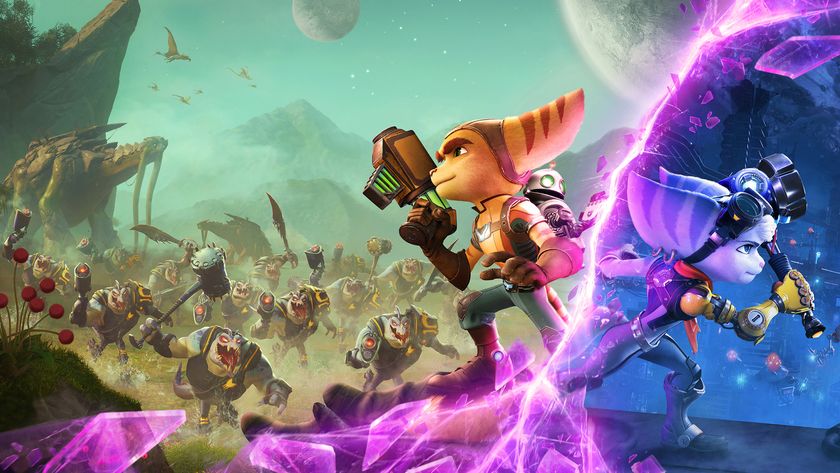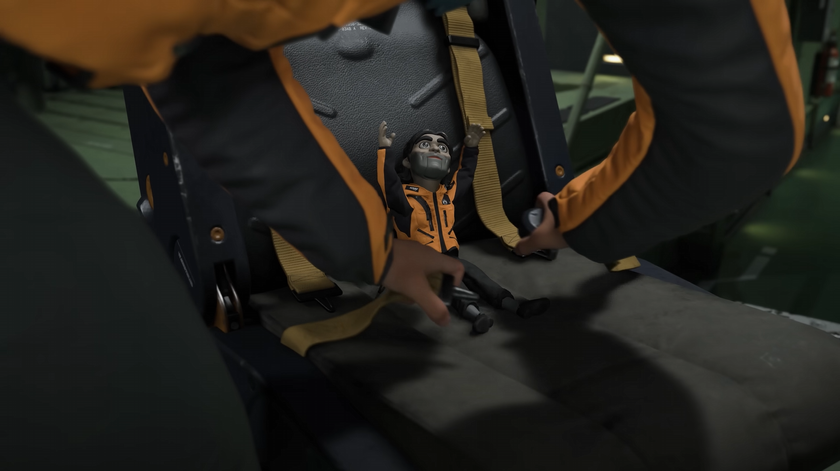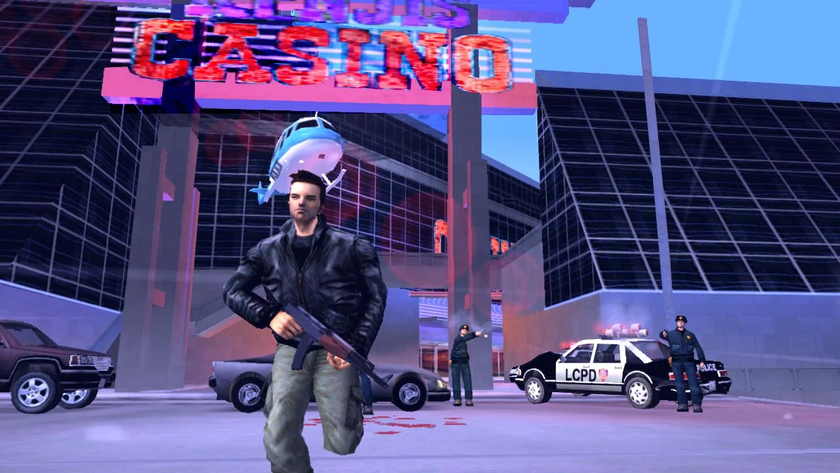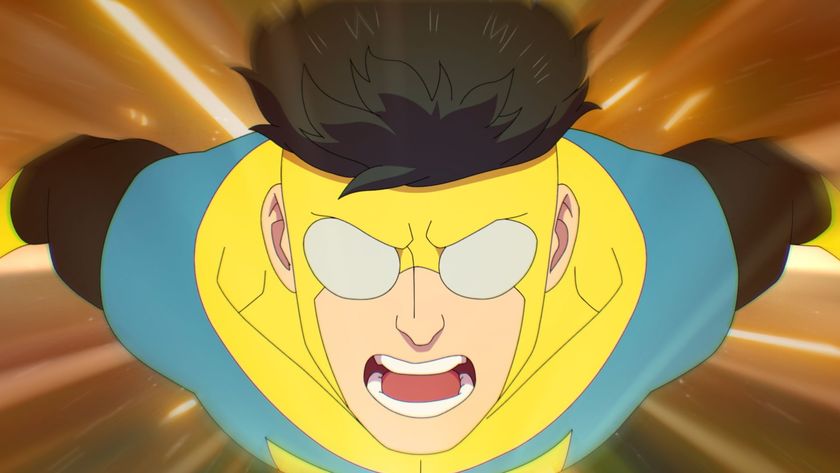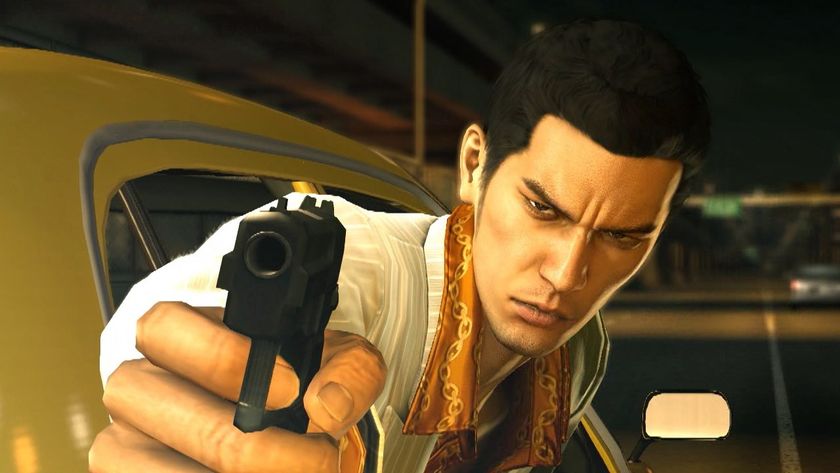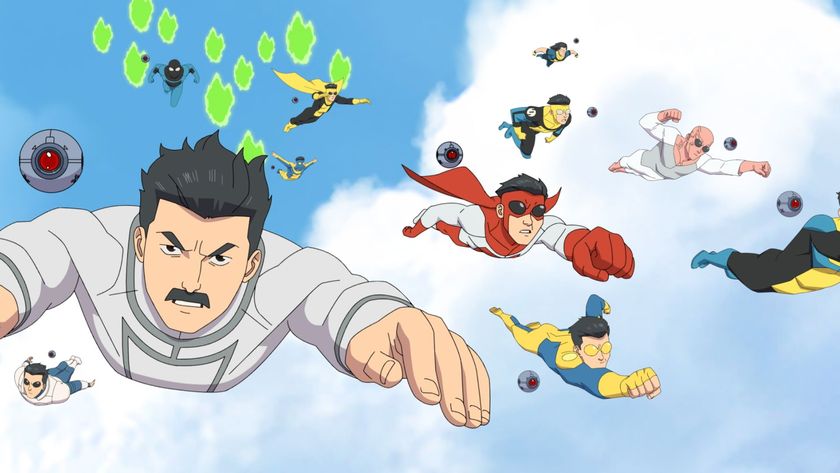My No Man's Sky adventures as a bumbling space pirate
As if No Man's Sky’s unfathomably large galaxy of procedurally generated planets wasn't big enough, that near infinite number of worlds is really only half the game. The other half takes place in between all those uncharted biomes, in the vast space that separates each solar system and collection of planets therein. While fellow editor Leon Hurley spent his precious 30 minutes of hands-on time in No Man's Sky cataloguing strange creatures and harvesting resources on the surface of a few planets, I came into this virtual universe on a mission: see how much mileage I could get out of the outer space gameplay while seated comfortably in the cockpit of my trusty ship. And while I'm no Han Solo or Malcolm Reynolds, I'd like to think that I've shown the beginnings of being the Guybrush Threepwood of space pirates. All that is to say: No Man's Sky offers some pretty legit starship adventures.
Even the very name of this PS4 and PC game evokes the opening theme to the sci-fi cult classic Firefly, with lyrics that romanticize the infinite, untameable freedom of the sky and the space beyond it. And right from the onset, you have the freedom to hop in your ride, point the nose of your ship skyward, and blast through the stratosphere in the space of a few moments. Now, I wasn't granted one of those sweet Star Wars-meets-Battlestar Galactica fighters you've probably spotted in No Man's Sky screenshots - seems like that's a goal that players will need to work towards as they gather resources and blueprints for new equipment. Instead, you start out in a bulbous-looking ship, an Aruto S94 model that looks like a hatchback compared to the sports-car-like luxury of those X-Wing-esque spacecraft. Still, it gets the job done, getting me into space and pumping in the oxygen I need to stay there. Mercifully, I never had to struggle with the logistics of a mid-flight bathroom break.
The complete lack of any load times in No Man's Sky is at its most stunning when you're rocketing out of orbit. Suddenly, you're able to contextualize the area you just launched from as a tiny speck of terrain on a tremendously large planet, with the promise that you can land anywhere you want and explore. But why limit yourself to one planet when you've got the means to play around in the entire vastness of space? Cruising around the stars is relatively simple, with four speeds of travel. Activating your forward thrusters with R2 has you flying at a comfortable pace, which you can greatly accelerate by entering a boosted state with a tap of the Circle button. If you need to go even faster, you can set your sights on a planet and activate Warp Speed, provided you've got the spare fuel. But when you need to get between solar systems, you're traveling in distances of light years. And to make that feasible in this lifetime, you're going to need a Hyperdrive.
Imagining the kind of distances you can travel in No Man's Sky is, in a word, staggering. Bringing up the galactic map is a truly humbling experience: all those glowing dots aren't just planets, they're entire solar systems, each with their own sun and set of orbiting planets. In the grandest sense, the 'ultimate goal' of the game is to reach the center of the universe, a shining orb on the map surrounded by countless procedurally generated constellations. To give you a nudge towards achieving the seemingly impossible, Hello Games has even included a faint line showing the quickest path you can take to get to the universe's core, 'quick' being a relative term to describe what I can only imagine could take hundreds of hours, depending on your starting point. Remember, that's if you have a Hyperdrive.

Acquiring a Hyperdrive became my primary goal in No Man's Sky, and the main reason I turned to a life of crime. You see, assembling such an advanced piece of technology is an expensive and time-consuming process. In this build, the Hyperdrive required 500 silicon and 300 iridium to construct (I should mention that No Man's Sky uses its own periodic table, with a mix of real and made-up elements, to contextualize your crafting materials). And while you could attempt to methodically, sustainably collect those resources by gathering them on the planets you explore, it's much quicker to simply plunder them. Like the mythical pirates of old, I decided that killing and stealing would be my go-to methods for getting ahead in this universe, morals be damned. Living as a pirate charting a sea of stars isn't nearly as honorable as the spacefaring rogues you're used to in most sci-fi flicks, but it's at least in the same galactic ballpark.
Crime in the form of resource thievery and wanton destruction of property doesn't go unpunished in No Man's Sky; the universe is guarded by robotic, self-generating Sentinels that'll take notice of you going on an ecosystem-disturbing rampage. Like Grand Theft Auto, killing NPCs and disturbing the galactic peace will raise your Wanted level, which increases the severity of the space police efforts to apprehend you. Normally, the Sentinel presence on a planet's surface is a handful of scouting drones, but gunning those down leads to increasing escalation of the robot cavalry, from quadruped attackers to giant walkers and even entire fleets warping into orbit, if you're being a real troublemaker. But those constant enemy reinforcements can be a good thing, because destroying Sentinels can be a fast-track towards gathering rare resources. Including the kind you need to construct a Hyperdrive.
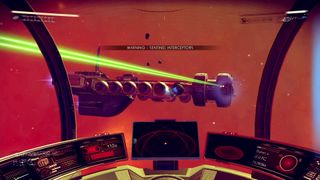
The same goes for space combat, though you're probably going to be terrorizing more innocent ships along the way. Like the movement controls, space dogfights are intuitive and accessible, with a generous amount of auto-aim to take all the frustration out of getting a bead of a moving target. Before long, you're bound to encounter groups of giant freighters transporting goods throughout the galaxy. And if you're a scoundrel like me, you're practically encouraged to destroy the resource-rich cargo pods lining these freighters' hulls, a merciless act of aggression that's somehow as satisfying as popping bubble wrap. Oh sure, they'll fire back, but you can disable those freighters' weapons by zapping them to pieces. You can also accrue resources in space by blasting asteroids, which break apart in a most satisfying manner. I was able to bore a hole clean through one asteroid and fly through it, inspiring me to try and create a small pocket in a larger asteroid that I could use for cover in a particularly intense dogfight. In my one attempt to do so, I immediately crashed into the asteroid and died.
Sign up to the 12DOVE Newsletter
Weekly digests, tales from the communities you love, and more
Death in outer space isn't so bad - you're simply revived at the nearest space station, which takes the form of a giant octahedron that resembles a colossal, gold-plated version of the No Man's Sky logo. Entering and exiting these vessels is a cinch thanks to the guided maneuvering, though at the moment, there's not a whole lot to do when you're inside one. A few small terminals in the station let you trade resources with the galactic market, and there's a porthole-like window that lets you gaze dreamily into infinite space. I happened to dock my ship at the same time as an NPC, though I never saw him exit his vehicle. I tried to buy his ship but couldn't afford even a fraction of the asking price, and stealing it by force was apparently not an option.
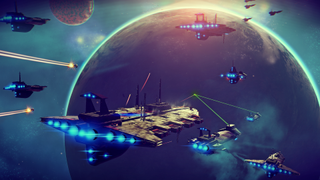
And with that, my time with No Man's Sky was up, at least for now. I never did manage to assemble that Hyperdrive, but knowing that I could was the perfect self-imposed goal, naturally lending itself to all this space pirate roleplaying and outer space dogfighting. Depending on the kind of player you are, the spacefaring bits of No Man's Sky could greatly outweigh the appeal of exploring an endless array of unfamiliar planets. To me, this aspect of No Man's Sky delivers on the same fantastical promise as games like Star Citizen - the freedom to explore an entire galaxy - only this game feels like a much more tangible realization of that seemingly impossible goal, even if you can't customize every last piece of your ship or explore as part of an entire player-controlled fleet. Fictional space rogues are known for being perfectly comfortable flying solo, and if you don't mind a sense of solitude during your star-jumping journey, No Man's Sky feels like the kind of space sim you could play for an eternity.
Lucas Sullivan is the former US Managing Editor of 12DOVE. Lucas spent seven years working for GR, starting as an Associate Editor in 2012 before climbing the ranks. He left us in 2019 to pursue a career path on the other side of the fence, joining 2K Games as a Global Content Manager. Lucas doesn't get to write about games like Borderlands and Mafia anymore, but he does get to help make and market them.
